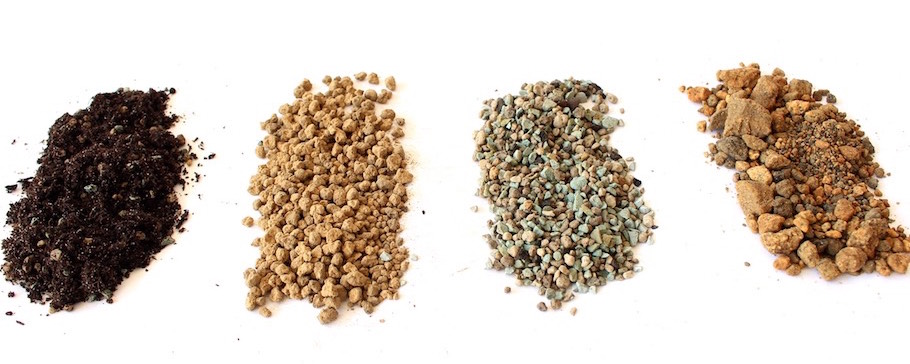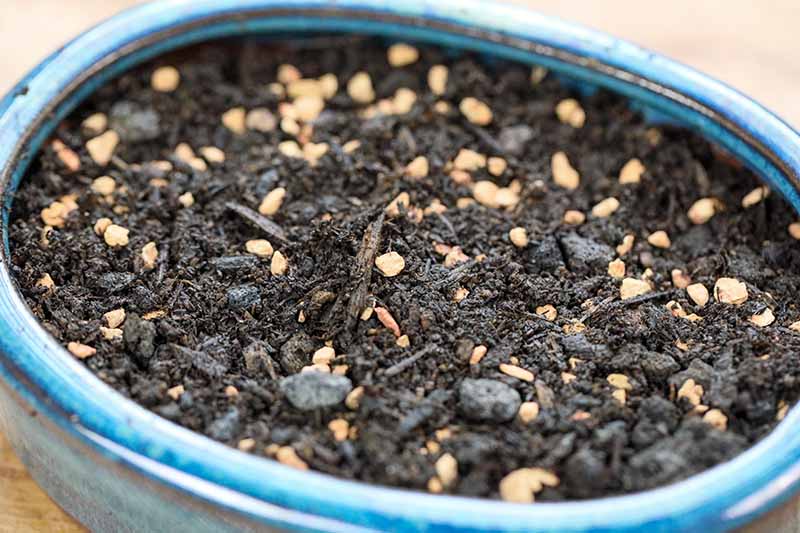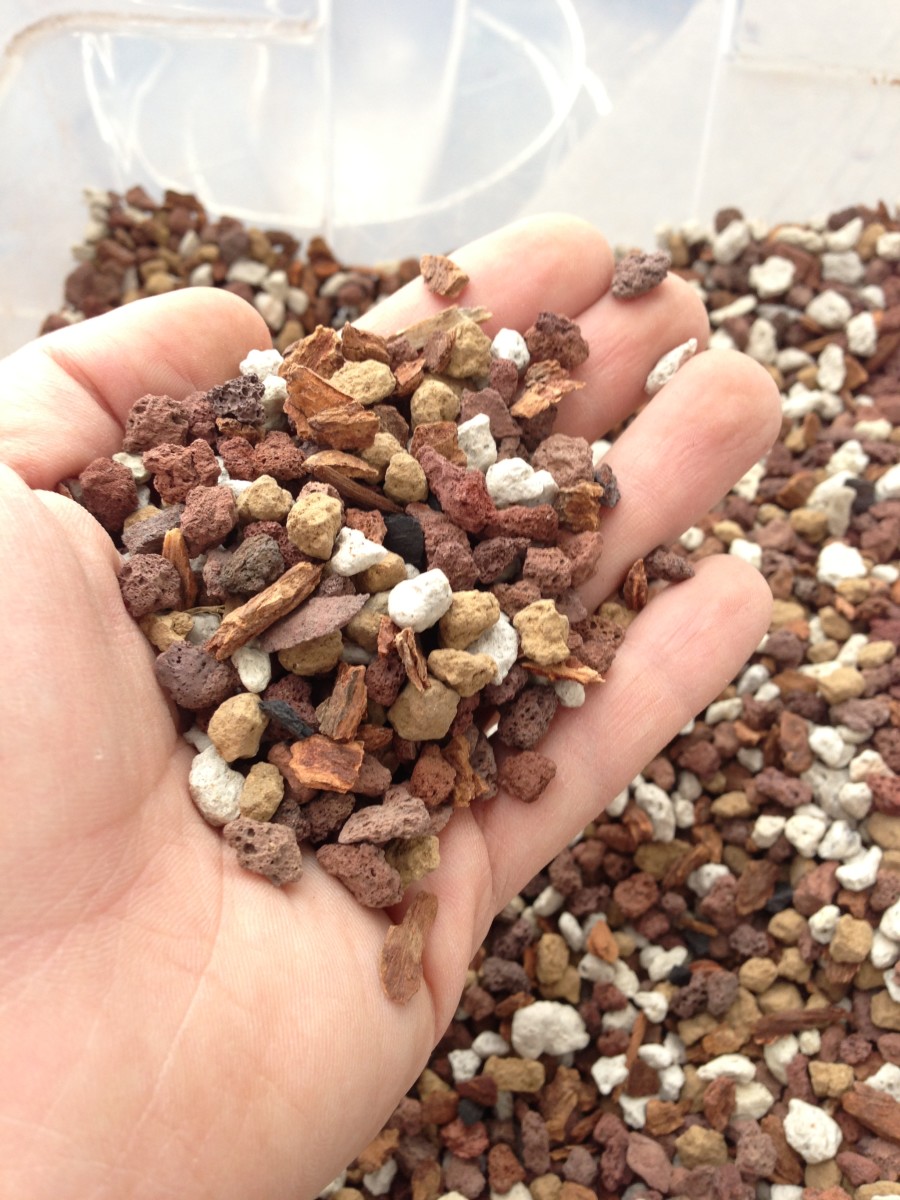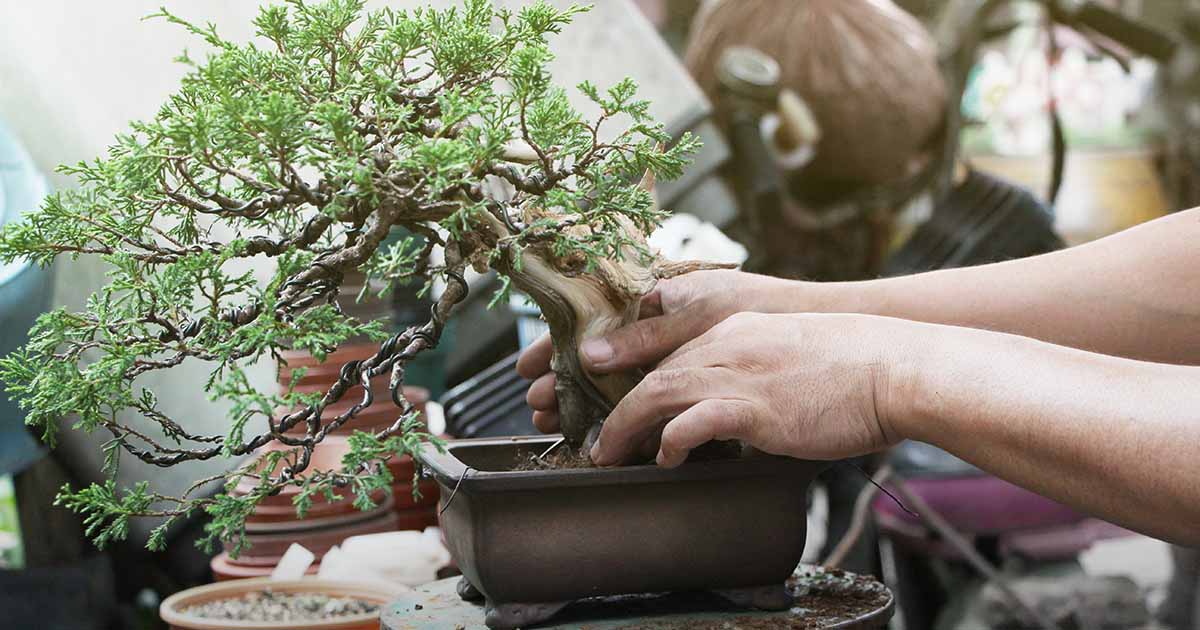In this article, we are going to check out the different sorts of soil and substrates Utilized in bonsai cultivation, together with organic and inorganic alternatives.
We are going to also find recommended soil mixtures for various bonsai species, such as deciduous, coniferous, and indoor varieties. From akadama and pumice to moss and river sand, we are going to dive in the interesting earth of bonsai soil and enable you to realize why It is an important Component of cultivating these exquisite trees.

Bonsai soil
What is bonsai soil?
Bonsai soil is a specialized type of soil that is specifically formulated for growing and maintaining bonsai trees. Unlike regular garden soil, bonsai soil is well-draining and provides the necessary nutrients and moisture balance for the tree's root system. The composition of bonsai soil is carefully designed to meet the unique needs of bonsai trees, ensuring their health and longevity.
The importance of bonsai soil
The choice of soil plays a crucial role in the success of your bonsai tree. The right soil provides optimal drainage, allowing excess water to flow freely and preventing root rot. It also promotes a healthy and well-developed root system, which is essential for the overall health and growth of the tree. Bonsai soil retains moisture while allowing air to reach the roots, striking the perfect balance for the tree's needs. Choosing the right bonsai soil is essential for maintaining a healthy and thriving bonsai tree.
Bonsai substrates
What are bonsai substrates?
Bonsai substrates refer to the different materials that can be used to create the ideal soil composition for bonsai trees. These substrates are carefully chosen to meet the specific needs of different species of bonsai trees and to ensure proper water drainage and nutrient availability.
Different types of bonsai substrates
There are various types of bonsai substrates available, each with its own unique characteristics and benefits. Some common bonsai substrates include:
- Organic materials: These include ingredients such as bark, peat moss, and coconut coir. Organic substrates help retain moisture and provide essential nutrients to the bonsai tree.
- Inorganic supplies: These involve parts like pumice, lava rock, and akadama. Inorganic substrates give great drainage, ensuring that surplus drinking water isn't going to accumulate within the roots of the bonsai tree.
- Soil amendments: They're substances which have been extra on the soil combination to reinforce its Houses. Examples of soil amendments contain perlite, vermiculite, and sand. They improve the soil's aeration, h2o-holding potential, and nutrient availability.
By knowing the differing types of bonsai substrates as well as their Attributes, you could pick out the most fitted 1 on your bonsai tree's desires.
Natural or Inorganic Soils
Organic and natural soils for bonsai
Organic and natural soils for bonsai are made up of organic materials for example bark, peat moss, coconut coir, and compost. These supplies give a wealthy source of nutrients for that bonsai tree and advertise balanced root advancement. Organic soils also have very good h2o retention Qualities, guaranteeing which the tree gets adequate dampness among watering periods. On the other hand, it is important to note that natural and organic soils may perhaps break down as time passes and grow to be compacted, resulting in weak drainage and prospective root issues.
Inorganic soils for bonsai
Inorganic soils for bonsai encompass supplies like pumice, lava rock, akadama, and soil amendments like perlite or vermiculite. These resources have excellent drainage Qualities, preventing waterlogged soil and endorsing aeration round the roots. Inorganic soils are desired by many bonsai enthusiasts because of their longevity and talent to provide a steady surroundings with the bonsai tree's root technique. Nonetheless, They could call for a lot more frequent watering and additional fertilization, as they don't hold just as much humidity or nutrients as natural soils.
Pluses and minuses of utilizing organic and natural and inorganic soils for bonsai
Picking out amongst natural and organic and inorganic soils for your personal bonsai tree depends upon a variety of factors, including the unique species of tree, your weather, and private preferences. Here i will discuss the advantages and disadvantages of each and every:
Natural soils:
- Professionals: Deliver nutrients, excellent h2o retention, advertise balanced root development.
- Downsides: May stop working eventually, possible for poor drainage Otherwise effectively managed.
Inorganic soils:
- Professionals: Fantastic drainage, long-Long lasting, steady setting for roots.
- Cons: Considerably less water retention, might need much more Repeated watering and fertilization.
By considering the pluses and minuses of the two organic and natural and inorganic soils, you can make an educated selection determined by the precise desires within your bonsai tree.
Soil factors
Crucial elements of bonsai soil
Bonsai soil is usually made up of 3 principal components: grit, organic matter, and clay. These factors do the job together to produce The best soil composition for the bonsai tree's root method.
- Grit: Grit, like sand or perlite, offers drainage and aeration during the soil. It can help avert waterlogging and permits air to reach the roots.
- Natural make a difference: Organic subject, including compost or bark, delivers nutrients for the bonsai tree. In addition, it will help retain dampness and improve the soil's overall composition.
- Clay: Clay particles give some drinking water retention attributes and support bind the soil collectively. Nonetheless, too much clay may result in inadequate drainage and compaction.
Role of every soil ingredient
Every single soil component plays a significant part in making a effectively-well balanced and balanced ecosystem for your bonsai tree's roots.
- Grit: Grit provides the required drainage and aeration in the soil. It stops the roots from sitting in stagnant drinking water, minimizing the potential risk of root rot and selling In general root wellness.
- Natural and organic make a difference: Natural and organic make a difference delivers essential nutrients on the bonsai tree. It aids in humidity retention and contributes to the general construction on the soil.
- Clay: Clay particles assistance bind the soil collectively and supply some h2o retention capability. On the other hand, it is vital to balance the quantity of clay in order to avoid challenges like inadequate drainage and compaction.
By being familiar with the roles of each soil element, you are able to create a balanced bonsai soil combine that fulfills the precise needs of the more info tree.

Recommended Bonsai soil mixtures
Common bonsai soil mixtures
There are several common bonsai soil mixtures that have been proven effective for various types of bonsai trees. These mixtures typically consist of a combination of inorganic substrates, organic matter, and soil amendments.
Some of the commonly used bonsai soil mixtures include:
- Akadama, pumice, and lava rock: This mixture is popular among bonsai enthusiasts for its excellent drainage and water retention properties.
- Akadama, lava rock, and natural and organic issue: This combination combines the many benefits of inorganic substrates with the nutrient-wealthy properties of natural subject.
- Pumice, perlite, and bark: This mixture offers very good drainage and aeration although retaining some dampness and giving nutrients.
They are just a couple examples of bonsai soil mixtures, and The perfect mixture will rely on the specific demands of one's bonsai tree as well as your local weather.
Elements to take into account when deciding upon a bonsai soil mixture
When picking a bonsai soil combination, it is vital to think about the next factors:
- Species of bonsai tree: Unique species have distinctive dampness and nutrient needs. Investigation the particular demands within your tree to pick out a soil mixture that meets its needs.
- Climate: The weather you reside in can influence the humidity retention Houses in the soil. Evaluate the average humidity and temperature in your area When picking a soil mixture.
- Watering patterns: Your individual watering habits and schedule should align Together with the soil combination you select. Some mixtures require extra Regular watering, while others retain humidity for lengthier periods.
- Funds: Some soil parts could be costlier than Other individuals. Take into consideration your budget when picking out a soil combination.
By getting these components into account, you are able to go with a bonsai soil combination that gives the most effective rising ailments for your personal tree.
Deciduous Bonsai soil
Best soil composition for deciduous bonsai
Deciduous bonsai trees, like maple or birch, have precise soil demands to help their advancement and wellbeing. The top soil composition for deciduous bonsai commonly features a mix of organic matter, inorganic substrates, and soil amendments.
A proposed soil composition for deciduous bonsai may perhaps incorporate:
- Akadama: Delivers very good h2o retention whilst allowing for for drainage. In addition, it releases nutrients slowly but surely after some time.
- Pumice: Promotes aeration and drainage inside the soil, stopping waterlogging.
- Bark or peat moss: Adds organic and natural subject to your soil, providing nutrients and humidity retention.
This soil check here composition makes sure that the roots of deciduous bonsai trees acquire the correct harmony of humidity, nutrients, and oxygen for exceptional expansion.

Coniferous and Pine soil
Ideal soil mixture for coniferous and pine bonsai
Coniferous and pine bonsai trees have specific soil requirements due to their water retention needs and preference for acidic soil. An ideal soil mixture for coniferous and pine bonsai should provide good drainage while retaining moisture and maintaining the desired pH level.
A recommended soil mixture for coniferous and pine bonsai may include:
- Akadama: Provides excellent water retention while allowing for sufficient drainage. It releases nutrients slowly over time.
- Pumice: Encourages aeration and drainage in the soil, stopping waterlogged roots.
- Peat moss: Provides natural subject and acidity to the soil, building an excellent pH stage for coniferous and pine trees.
This soil mixture makes sure that the roots of coniferous and pine bonsai trees get the proper stability of humidity, nutrients, and acidity for their distinct desires.
Akadama
Exactly what is akadama?
Akadama is usually a kind of clay soil that is certainly greatly Employed in bonsai cultivation. It truly is known for its excellent h2o retention Homes, which assure a steady provide of moisture to the bonsai tree's roots. Akadama can be prized for its capacity to launch nutrients slowly over time, delivering a reliable source of nourishment to the tree.
Advantages of applying akadama in bonsai soil
Employing akadama in bonsai soil presents several benefits:
- H2o retention: Akadama has exceptional water retention Attributes, enabling it to hold moisture with out getting to be waterlogged. This makes sure that the bonsai tree's roots get a steady supply of drinking water, promoting healthful progress.
- Nutrient release: Akadama little by little releases nutrients to the soil after a while, providing a regular supply of nourishment with the bonsai tree. This cuts down the necessity for Recurrent fertilization and helps manage a well balanced nutrient profile.
- Aeration: Inspite of its h2o retention abilities, akadama also offers adequate aeration to the bonsai tree's roots. It allows air to get to the root technique, stopping difficulties like root rot as a result of deficiency of oxygen.
By incorporating akadama into the bonsai soil, you may produce an optimum increasing atmosphere to your tree, guaranteeing its wellbeing and vitality.

Lava rock
How lava rock benefits bonsai soil
Lava rock is a popular component in bonsai soil mixtures due to its excellent drainage and aeration properties. It is typically used in conjunction with other substrates to create the ideal soil composition for bonsai trees.
The benefits of lava rock in bonsai soil include:
- Drainage: Lava rock provides excellent drainage, preventing waterlogging and ensuring that excess water flows freely through the soil. This helps prevent root rot and provides a healthy environment for the roots to thrive.
- Aeration: The porous character of lava rock lets air to flow into within the soil, providing oxygen for the bonsai tree's root procedure. Good aeration is important for healthful root enhancement and overall tree growth.
- Longevity: Lava rock is a resilient material that does not break down very easily. This makes sure that the soil composition continues to be stable after some time, reducing the necessity for Repeated soil replacements.
Lava rock is offered in several sizes and shapes, allowing for personalisation based upon the specific requirements within your bonsai tree and soil demands.
Different types of lava rock
There are actually differing kinds of lava rock which might be Employed in bonsai soil mixtures, which includes:
- Black lava rock: Black lava rock is actually a frequently employed product in bonsai soil mixtures. It offers great drainage Homes and adds an aesthetic element to the general presentation with the bonsai tree.
- Purple lava rock: Crimson lava rock is another well known choice in bonsai soil mixtures. It provides equivalent drainage and aeration Advantages as black lava rock but has a distinct reddish color that adds visual curiosity into the container.
Both equally black and red lava rocks are widely accessible and might be effortlessly incorporated into your bonsai soil mixture.
Potting
Vital tips for productive bonsai potting
Potting is often a critical approach in bonsai cultivation, mainly because it directly impacts the wellness and growth of the tree's roots. Here are some necessary tips for productive bonsai potting:
- Pick the correct pot size: Choose a bonsai pot that enables for root advancement while still providing a comfortable in good shape. Stay away from pots that happen to be as well huge, because they can cause extreme soil dampness and inadequate root advancement.
- Use bonsai wire: Safe the tree inside the pot employing bonsai wire to make sure balance. This stops the tree from shifting or turning out to be uprooted for the duration of watering or solid winds.
- Trim and unfold the roots: Ahead of potting the bonsai tree, meticulously trim and unfold out the roots. This encourages outward growth and stops root tangling or root-certain concerns.
- Include mesh screens: Place mesh screens over the drainage holes at The underside of your pot to stop soil erosion and guarantee appropriate drainage.
- Use refreshing bonsai soil: When potting, often use new bonsai soil to provide the necessary nutrients and ideal growing circumstances for the roots.
By adhering to these critical strategies, you'll be able to make certain a successful potting system and boost the general wellness and growth of one's bonsai tree.
The part of bonsai pots in soil humidity Manage
Bonsai pots play an important part in soil moisture Command, specifically impacting the health and fitness and growth with the tree. Bonsai pots are generally shallow and also have drainage holes, permitting excess h2o to escape and preventing the soil from getting waterlogged.
The design of bonsai pots encourages evaporation and air circulation, which will help regulate soil dampness degrees. The shallow depth and vast opening of the pot expose additional area location of the soil to your air, aiding in moisture evaporation. This helps prevent the roots from sitting in excessively moist soil, minimizing the risk of root rot and other h2o-connected issues.
Also, the drainage holes in bonsai pots enable any excess drinking water to escape, blocking waterlogged soil and selling aeration round the roots. Suitable aeration is essential for the well being and enhancement of the basis method, guaranteeing the bonsai tree receives the required oxygen for expansion.
By making use of bonsai pots suitable for helpful dampness control, you are able to develop a positive surroundings for your personal bonsai tree's roots and encourage its Total wellness and vitality.
In summary, choosing the appropriate bonsai soil is vital with the achievements and wellness of your respective bonsai tree. Being familiar with the different sorts of bonsai substrates, the part of natural and inorganic soils, The real key elements of bonsai soil, and the different suggested soil mixtures can assist you offer the optimum growing problems for your bonsai tree. No matter if you've got a deciduous or coniferous bonsai, incorporating supplies like akadama and lava rock can enrich the soil's drainage and nutrient availability. In addition, listening to potting procedures and making use of bonsai pots made for dampness Command will more guidance the flourishing growth of the bonsai tree. With right comprehending and implementation of bonsai soil procedures, you could enjoy the elegance and artistry of bonsai cultivation For a long time to come back.
